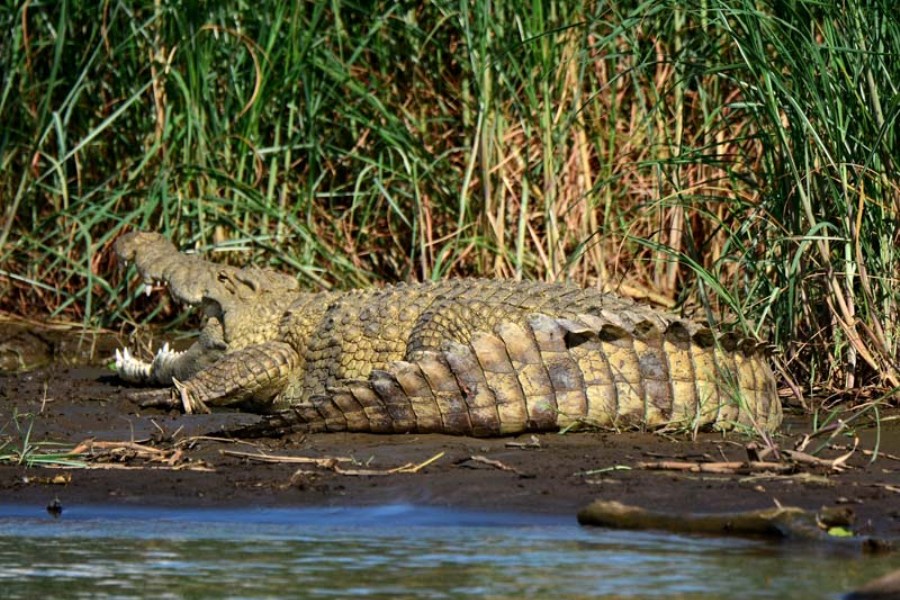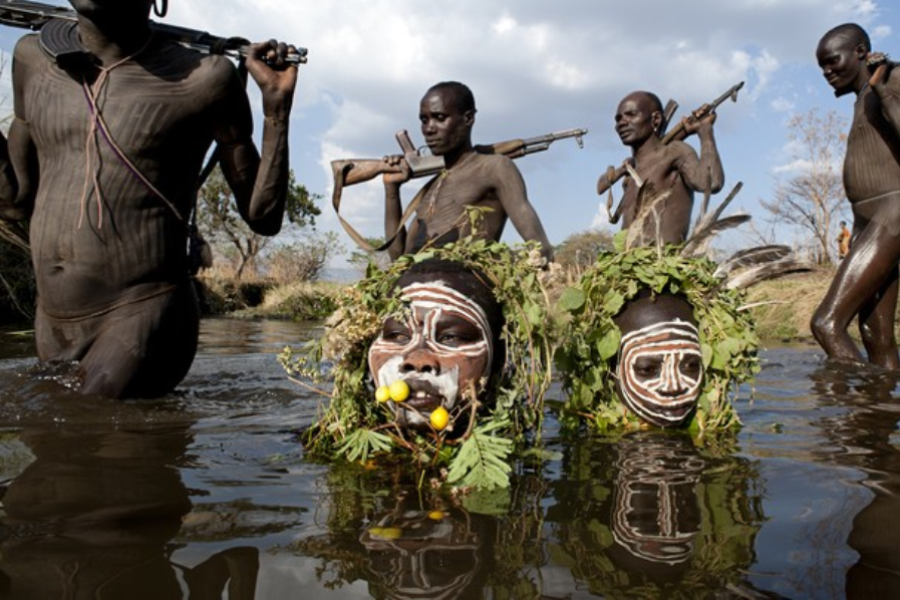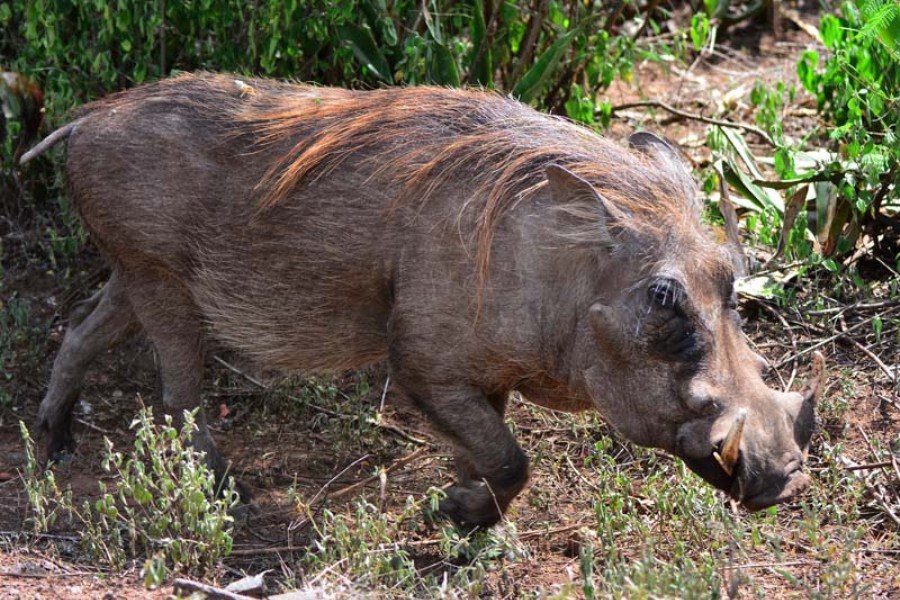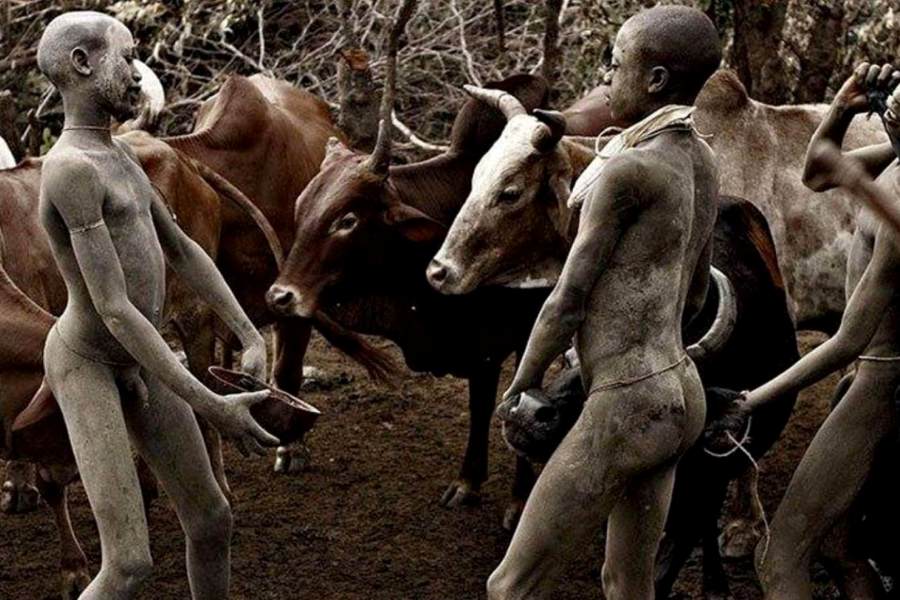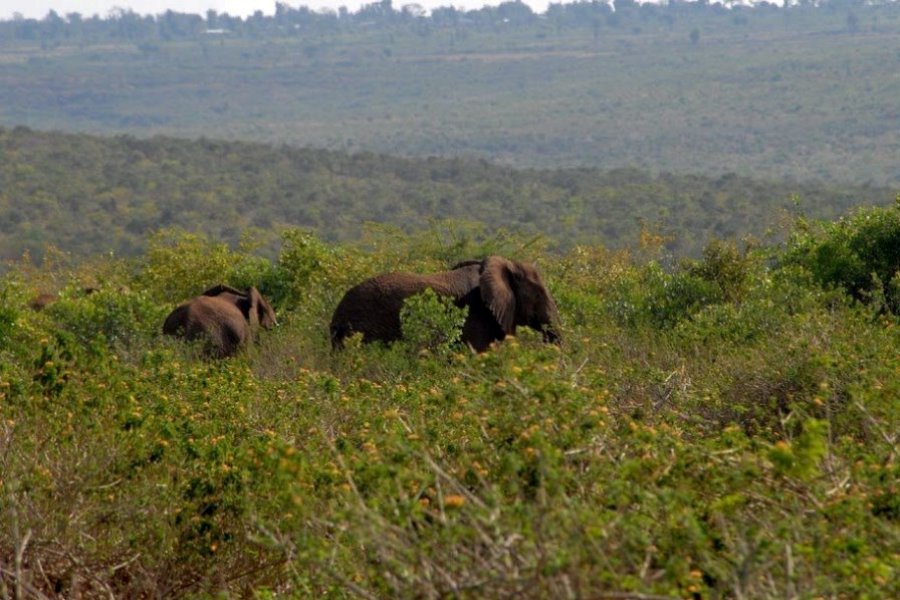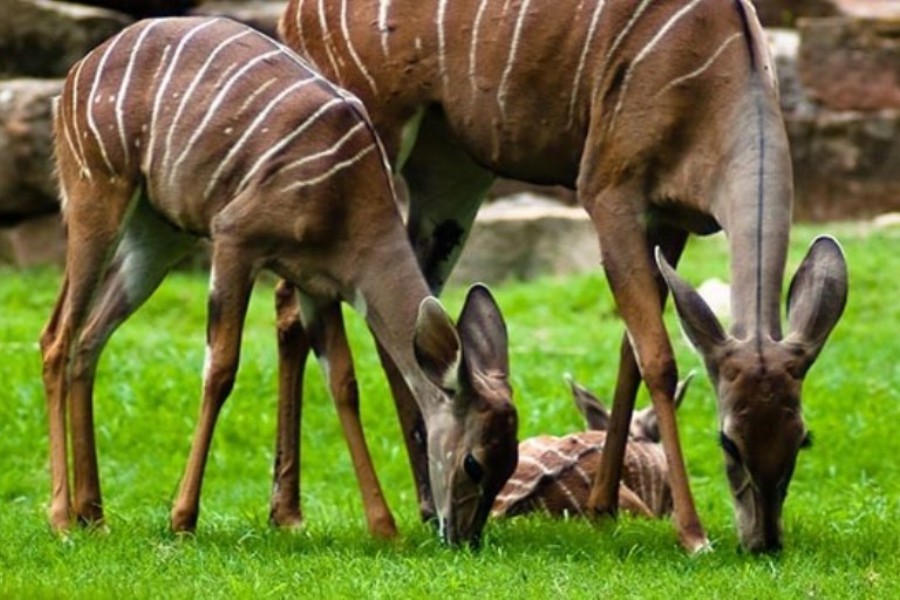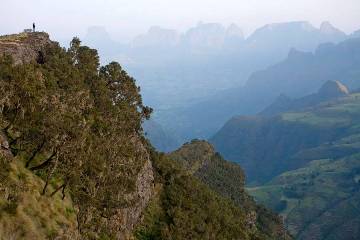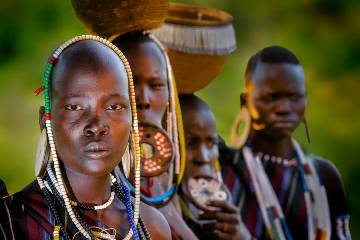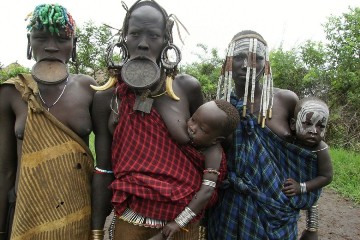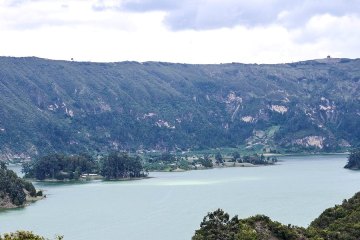Surma Trekking -8 days
Ethiopia is home for numerous ethnic groups and tribes, more specifically there are about 80 ethnic groups and more than 250 languages and dialects are spoken with in the country. Unlike other parts, the Southern Omo Valley is known for its ethniical diversities and it is uniquely isolated from modern Ethiopia. There are 16 nomadic and semi-nomadic people inhabiting the Omo Valley without any influence of the outside world. The lower omo valley is also one of Ethiopian world heritage site (some old hominid fossils were discovered around Lake Turkana near Ethio-Kenyan border)
SURMA (SURI) is one of the tribes in the Southwestern side of the Omo River living in the evergreen deserted mountains and hills. The Surma belongs to the Nilotic—speaking group and are gatherers of wild fruit and pastoral cattle herders numbering more than 21,000 people.
They are uniquely known for their donga, a ceremony which involves stick fighting among boys and considered to bring heroism, pride, and prestige. The stick fight enables the winner seek his bride against his rivals. The Surma men are often shave their hair as adornment with their earlobes and they are usually half necked and totally nicked during stick fighting. The Surma Women wear lip plates inserted in their lower lips and have different hair adornments made by using razor blade. In a typical Surma village live more than 1000 people leading the common life.
The Surma are animist who worship spirits and gods. They have also “medicine men” who acquire healing responsibility from their forefathers hereditably.
An exclusive exploration of remote areas with one of the worlds untouched cultures: mainly the Surma, Dizi, Yem, Bench, Menet, Mursi, Nyagatom, Dassench, Hamer,Karo,Bena and Aari in their village where you are going to be up close to their day to day activities. We organize trekking expeditions to the Surma villages in the south western part of the country where You’ll definetely see the untouched culture.
Day 1- Arrive Addis Ababa-City tour
Upon arrival in Addis Ababa, you will be accompanied by Zagwe Ethiopia tour employee and transferred to your hotel . ‘Addis Ababa’ translates as ‘new flower’ in Amharic – the beautiful local language you will hear sung throughout its chaotic streets. Chosen for its verdant setting and wonderful climate this was not always Ethiopia’s capital —the (rather romantic) story tells that it was a love gift, the choice of the consort of the Emperor Menelik II who preferred the location to the country’s original capital Entoto. –
The flower has most certainly bloomed and the second you step out of the airport you realise you are opening the door into an ancient, mystical and deeply religious world fighting strongly to keep its presence amongst high rises and shopping centres. A city of immense contrasts its chaotic streets are a hotchpotch of Menelik remains and dizzying investment. Before heading into the country’s rural splendour strike out into this colourful metropolis with your charming local guide. Visit the former palace of Emperor Haile Selassie, now a fabulous Ethnographical museum , St George’s Cathedral and a panoramic view of the capital from the Entoto Mountain.
Meal: breakfast /lunch /Dinner
Overnight at Hotel
Day 2: Drive to Jimma
Morning after breakfast drive 345km to Jimma. On the way we cross the magnificent and picturesque Gibe gorge and the Gibe River. Jimma was the capital of the former Keffa province. It is in this region that the coffee beans originated for the first time by a shepherd.
Meal: breakfast /lunch /Dinner
Overnight at Hotel
Day 3: Drive to Mizan Teferi
Today, we will be continuing our south-west routing as we make our way to Mizan Teferi. The 240km drive is made up of a mosaic of forest and cultivated land dominated by coffee, tea and various spices, and we will have ample opportunity to stop and take advantage of any photographic opportunities we may encounter.
Meal: breakfast /lunch /Dinner
Overnight at Hotel
Day 4: Drive to Bebeka
En-route we will visit coffee plantation, the Ethiopias largest old coffee plantation. On the way visit the Menit tribe. After crossing the Akobo River you experience the African Savanna grass land and on the way visit Orom, Kefecho and Bench tribe in their village.
Meal: breakfast /lunch /Dinner
Overnight Camping
Day 5: Drive Kibish
We will arrange you mules for your personal equipment’s and for your self also. And you will experience a walk through Savanna grassland.
if there is any Donga (Stick fighting of the Surma people) we will attend it otherwise we walk around the old kibish village (14kms round trip) for the visit of more of the Surma villages-to visit and appreciate the very attractive culture of Surma tribe, they are renowned for the strange custom followed by their women who, on reaching maturity, have their lower lips slit and circular or rectangular clay discs inserted The rest of the day you finalize the arrangement of the team for the next trek to the next site.
Meal: breakfast /lunch /Dinner
Overnight Camping
Day 6: Drive back to Tulgit
After breakfast we walk with in the Surma territory for about 4-5 hours. The walk will have gentle slope ascending and descending. Upon arrival at Tulgit we will walk for about 40 minute to visit the Surma Village.
Meal: breakfast /lunch /Dinner
Overnight Camping
Day 7: Drive Maji
Morning we walk through the beautiful country side for about 3 hours to visit the Dizi tribal village and the spectacular Maji Falls. We Walk back to Maji. The rest of the day we finalize the arrangement of the team for the next trip to Jimma.
Meal: breakfast /lunch /Dinner
Overnight Camping at Maji (altitude 2400 m).
Day 8: Drive back to Jimma
Drive to Jimma, with a stop to waterfalls on the way, for short walking too. Reach Jimma and visit the AbaJifar palace, old king house + the museum of all his artifacts and more, in town.
Meal: breakfast /lunch /Dinner
Overnight Hotel
Day 9 : Drive to Addis Ababa
Heading to Addis Ababa we will be driving 330 kms to Addis . we will stop at Walkite for lunch. En route we will be visiting the Gurage and Oromo people and their beautiful villages.
In the evening before departure, you will be invited a farewell dinner party at one of the best traditional restaurants in Addis where you taste variety of Ethiopian meals, and watch the folkloric dancers of the Ethiopian people.
End of Tour. Departure
- This trip can be tailor made throughout the year to suit your requirement.
Date and Availability = All the year This trip can be tailor made throughout the year to suit your requirement and itinerary can be adjusted according to your time, budget and interest. Price: , if you want quotation or any other tour information about this trip we are very happy to help. Request a quote
suit your requirement and itinerary can be adjusted
Trip Notes
Equipped with the best vehicles and driver Guide / upon request you will be escorted by expert guides /you are immersed in the ancient history, cultures, natural habitats and spiritually of this captivating country and its people. This itinerary can easily be modified as a custom trip and if your travel dates are flexible we recommend visiting Ethiopia in conjunction with the colorful Timkat( epiphany ) and Gena( x-mass) festivals January 19 and 7 respectively
Essential Trip Information
Plan your trip
Getting around Ethiopia:
If you have more time, or delight in the joys of overland travel, we can provide you vehicles (4WD, minibus and coaster bus)
An increasingly popular option with tourists is to travel overland as much of the roads are an asphalt and all —weather roads.
More remote parts of the country, such as the Danakil Depression and Erta Ale, or the tribal lands of South Omo, can only realistically be visited by 4WD expedition.
Although all-weather roads do run through Simien Mountains and Bale Mountains national parks, the most rewarding way to explore these biodiverse highland destinations is by 4WD.
Visas: – All nationalities require a visa for Ethiopia which can be obtained before departure or on arrival (at a cost of USD50).
Upon request we arrange visas for our travellers, or if an invitation letter is necessary then we will arrange this for you.
Vaccination: –There are no mandatory vaccination requirement for this trip.
Climate: The dry seasons occur from June through to September, and between November and March. There are two rainy seasons. The first of these – late March through to early June – is heavier, with the South Omo Valley and regions local to the Bale Mountains receiving between 200 and 250mm in April and the first weeks of May, the mid-south peaking at about 125mm, and Ogaden receiving 75mm at its very best. This pattern – the further south-east one travels, the drier it gets – is just as true later in the year, during the area’s second set of rains, when between September and November the likes of Hagere Marian (just north of South Omo) peak at around 180mm (October), while Gode in Ogaden barely gets above 50mm. Clearly, travel in the mid-south and south-east is hard going, with temperatures soaring into the late thirties, the heat dry, the habitats extremely arid. The South Omo Valley is also dry and hot, but, being in the Rift Valley, better watered and fairly comfortable during the dry seasons.
Being relatively close to the equator, Ethiopia has almost twelve hours of constant daylight no matter what time of year you visit. With the sun rising at 6:30am and setting at 6:45pm, most of our days start early so as to be at our hotel by sunset. The program for each day will vary, according to whether we are travelling, visiting local villages or both.
When to go —All year round
Transport: During the course of your trip, we will use a variety of vehicles, all which are fit for purpose and the conditions encountered( for this trip We will be using 4WD Toyota land cruiser )
Whilst we do not include animal rides on most of our trips, there are occasions where it may be possible to undertake them.
We take every precaution to ensure smooth logistics, our vehicles and equipment are the best available on the market. Most importantly, our adventures have always sought to benefit the local peoples we interact with, safeguard the ecosystems we explore and contribute to the sustainability of travel in the regions we experience. You will be also accompanied by local guides whose knowledge and passion will add a unique dimension to your trip. Their experience and enthusiasm ensures that we maintain the leading edge in adventure travel and therefore providing excellent value for money. Given our local knowledge, experience and excellent leadership, we are quite sure that this tour will be a trip of a lifetime.
what you carry :-In your daypack you will need to carry extra warm clothing (depending on the altitude, location and weather), a rainjacket, water bottle, camera gear, valuables and personal items such as sunscreen, lip balm etc.
Accommodation – On this particular trip we will be in a combination of hotels and remote camping, where the facilities will be very good . we will be sleeping in 2 men tents (you can share or have a tent to yourself) and the crew will erect and take down your tent each day (as well as carrying your gear to the next camp-site).
Food: – Hotel meals are generally good and full of variety. Local dishes tend to be very good if you like hot, spicy food although milder versions can be requested.
Food-wise you will have a private cook for your trek who will provide breakfast, packed lunch, tea and dinner each day. The food is great and delicious with full of variety. Expect bread and pancakes / eggs for breakfast, filling sandwiches for lunch, herbal teas, fantastic coffee and popcorn at the end of a long days trekking and then a massive meal to end the day with soup starter and a hearty main with plenty of veg to finish
Luggage: On Tour
A kitbag/barrel bag carried by mules on trek, a stuff-sack to store surplus belongings while on trek and a daysac. Pack mules are used to carry equipment, food and most personal gear. Pack heavy/dense items into your kitbag.
Trek Kit Bag
Before leaving Gondar there is plenty of time to re-sort luggage into what you need on trek and what can be left in Gondar. Think about what you are taking on trek (remember your sleeping bag) and then think how big your kit bag needs to be. A nylon or canvas bag with a zip along the top is also suitable. Whatever you choose, it must be strong, as porters are not very gentle with baggage. Soft luggage is preferable! Framed rucksacks are unsuitable. The weight limit for the bag and its contents is 15kg but you will probably find that you do not need this much. Please note there are occasional opportunities to hand wash clothing whilst on the trek.
Small Rucksack/Daysac
During the course of a trekking day, you do not have access to the luggage that is being carried for you by the porters. In any mountain region the weather can change rapidly and you must be equipped for this eventuality. Your daysac should, therefore, be large enough to carry the following: waterproofs, sweater, long trousers (if walking in shorts), warm hat and gloves, sun hat, sun cream, water bottle (at least 2litre), tissues and your packed lunch. Most people normally find that this adds up to about 2 to 3kg. Camera equipment can be heavy so think carefully when deciding what to take. Other optional items in a daysac might be binoculars, a diary or a book to read at lunch time. It is usually more comfortable to carry a slightly larger pack that is not full than to carry a small pack that is overfull or with ‘bits’ tied on the outside. Something between 20 and 25 litres capacity is probably the most suitable. A shoulder bag is not a practical alternative.
Plastic Bags
Luggage:- 15Kg
Fitness – You don’t need to be especially fit to join the trips , but there will be stairs to climb, hills to walk and sites to explore, so you’ll enjoy it more if you have a reasonable level of fitness.
Small Group Size: On our this tour, we believe it is imperative to keep the group sizes small. Most trips are limited to an average maximum of 20 travellers, thus giving you more access to fragile cultures, better opportunities to interact with local people, and the knowledge you are making less of an impact while there.
Private groups: The adventures featured in our itinerary are just a starting point for many of our private group travellers. Working closely with our Groups Department we can organize custom designed itineraries for groups of friends, clubs, charity’s, schools or even work colleagues. Our team will assist you with all aspects of your private group adventure from itinerary design to group flights. For group traveller pledge considerable discount.
Customized tours: On request, this tour can be customized for small groups.
Proceeding / additional days: It’s no problem to add days before or after the expedition and we’ll book these for you. If you bring more time, you could do day trips from Addis or take an extension tour
Group booking discount: If at least 5 people together book this trip, 6% discount is given.
Available Tours
Trek Through the Chess Pieces of the God — Semien Mountains NP
GROUP SIZE 1- 20 Participants
The Simien highlands of northern Ethiopia form one of the major mountain massifs in Africa.
View MoreHistoric Route, Semien Mountains and Omo Valley
GROUP SIZE 1- 20 Participants
top the Ethiopian Highlands, you are standing on the very roof of Africa. This vast high-altitude plateau, marked with volcanic peaks
View MoreOmo Valley , Historic route , Harar and Yabelo 14 days
1- 20 Participants
Ethiopia’s Northern Circuit offers a remarkable density of historical and religious attractions coupled with a striking landscape of endless mountains.
View MoreHiking Wenchi Crater Lake
1- 20 Participants
Wenchi Crater Lake is 155 km west of Addis Ababa, between Ambo and Weliso. An extinct volcano,
View More